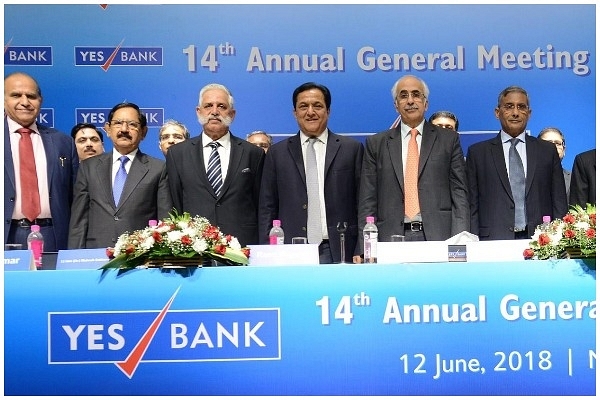
A Rescue Plan Cannot Become The New Normal: What It Will Take To Prevent Another ‘Yes Bank’
Regulators and regulations, both have to be upgraded to prevent what happened in Yes Bank.
Once the euphoria of resuming normal operations subsides and regular calmness in the functioning is restored, Yes Bank Limited (YBL) will encounter the actual challenge of finding out what went wrong and how to prevent its recurrence.
A serious introspection and action agenda to tackle the cause within set time lines will be essential for key stakeholders to ensure perpetual sustainability of YBL.
The confidence with which investors have come forward to the rescue should return satisfaction of saving an entity in national interest.
The weakness in corporate governance and operational risk is evident.
1. Strengthening corporate governance
Reinforcing systemic controls on corporate governance is the most debated issue but obviously, the norms are weakened when it comes to implementation and monitoring.
The bank could pool huge stock of bad loans despite regulatory overview and internal systemic controls.
The framework of corporate governance is designed on the premise that collective wisdom of senior domain experts and proven leaders can optimise resources of organisation so as to enhance stakeholder value while keeping the tenets of sustainability and image intact.
The fiduciary relationship as envisaged in Companies Act 2013 must be able to regulate the conduct of the board. Not only in YBL but also in many other failed entities, it was observed that the head/MD and CEO concentrates so much of power with him/herself that the organisation drifts in the direction of his/her choice.
This exposes the organisation to survival risk and harms the long-term interest of the bank.
The urge to amass wealth may lead to recklessness to fulfill near term individual goals that can cause irreparable damage. It is more painful that they are able to act so despite the regulatory checks. They have the knack to dodge even the best of regulations and audit scrutiny.
Given such obvious dereliction of duties by few individuals, the task of the regulators is to put in place systemic controls and effective monitoring system to capture early signs of weaknesses in governance.
The position of Chief Risk officer (CRO) and Chief Compliance officers (CCO) needs to be suitably elevated and made more autonomous to enable them to discharge their responsibilities without fear and favour.
They should act like sleuths of the regulators to keep a watch on the conduct of the entity.
2. Bank level reforms
The internal rulebooks of the banks will have to be reviewed to test their efficiency.
Banks develop credit appraisal systems to select the potential borrowers. Unless they are compromised wholesomely, it is not possible to finance fundamentally weak entities.
The reports after the debacle of YBL indicate that many corporates/large borrowers who were refused loans by other banks had been accommodated.
The quid pro quo has sunk the asset quality to unsustainable levels. Hence, more than redesigning credit appraisal system, it will be necessary to put in place compliance metrics that makes compromising the credit decision process impossible.
The autonomy and independence of credit assessment will have to be structured to pass it through various filters that are accountable to the board, and even sometimes to the regulators.
The automatic data flow from banks to regulators on such exposure should be so brisk and granular that quick proactive intervention is possible.
The regulators should also schedule discussions with line mangers to understand their work pressures and constraints that can reveal many ethical dimensions.
The regulators will have to assume mentorship role to dissuade leaders with vested interest to damage the organisation, particularly when whistle blower policy becomes ineffective.
3. Way forward
Normally the can of worms spills after the damage crosses breaking point. Like in YBL, the credit deposit (CD) ratio breached 100 percent mark.
Deposits started falling, ratings were downgraded dissuading new investors and market intelligence began to suggest exit for the shares.
Till a year ago, it was the among the most promising private banks.
Therefore, proactive management of other banks too has to take a cue and revisit their internal governance system.
Regulators have to keep a watch on the performance parameters of other banks to ensure that such market disruptions do not repeat.
Banks should themselves introspect about quality checks and implement regulatory norms in letter and spirit.
The failure of YBL and its reincarnation should be a lesson to the industry at large.
These challenges are easy to discuss but difficult to tackle. They need intense handiwork from both banks and regulators.
Therefore, the waning crisis in YBL throws up more challenges for banks and regulators that need intense action, sustained monitoring and robust oversight.
It is necessary to realise that post crisis handling of the working of YBL will be an onerous task and full reinforcements will be required without prolonged celebration of its survival.